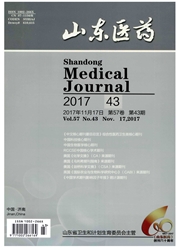

 中文摘要:
中文摘要:
目的观察对脊柱后路手术并发硬脊膜破裂者进行术中、术后综合治疗及早期拔除引流管的临床疗效。方法2l例行脊柱后路手术并发硬脊膜破裂、脑脊液漏的患者,均予术中修复损伤硬膜囊、生物蛋白胶封闭、放置引流、严密缝合及术后调节体位、抗感染、脱水、补充水电解质、3—5d拔管等综合处理。观察硬脊膜破裂愈合情况。结果19例硬脊膜破裂口愈合良好(其中3例经术中及时处理后即未再出现明显脑脊液漏);1例行颈椎后路切除硬膜下复发肿瘤者拔管后有微小的皮下波动感,1例腰椎管狭窄术后老年患者拔管后伤口有少许脑脊液渗出,经加压包扎后破裂口均愈合。结论对于脊柱后路手术并发硬脊膜破裂者,术中积极处理和术后综合性治疗十分重要,而早期拔除引流管亦值得推广应用和深入研究。
 英文摘要:
英文摘要:
Objective To evaluate the treatment of dural tears after posterior spinal operation and the efficacy of early removal of the drainage tube. Methods A retrospective analysis was performed on 21 patients undergoing posterior spinal surgery complicated with dural tears and cerebrospinal fluid (CSF) leakage. During the operation we tried to find and re pair the damage of dura, close fibrin glue, place drainage and tightly suture as well as the postoperative treatment of bed resting, preventing infection, nutritional supporting therapy and removing the drainage 3-5 days after the operation. The healing of dural tears was observed. Results Nineteen patients recovered after conservative treatments. One case seemed to be subcutaneous fluctuation, another case had a small amount of cerebrospinal fluid leakage through the wound and beth were healed after pressure dressing. Conclusions Intraoperative active treatment and postoperative comprehensive conser- vative therapy are effective for dural tears. Early removal of the drainage tube and suture can reduce the CSF loss and the risk of infection. It is worthy of application and popularization.
 同期刊论文项目
同期刊论文项目
 同项目期刊论文
同项目期刊论文
 期刊信息
期刊信息
